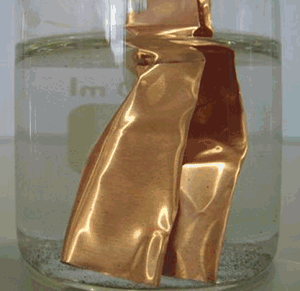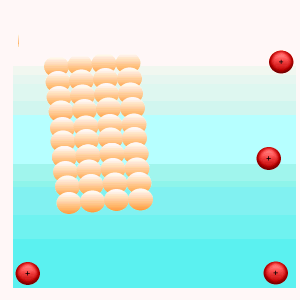

The fact that electrons flow from reactive metals to less reactive metals is the basis of the modern day battery. Electrons are forced to flow from one metal to another via a wire. As the electrons travel through the wire they are forced to travel through items such as light globes and radios and do useful work for us.
A sample of silver solution is found. Jonathon decides to recover the silver by placing a metal in the solution. He has a piece of copper and gold. Which metal should he use. Explain how the silver will be recovered.
Copper is commonly used around the home and is one of the least reactive metals. It will react with most other metals to take their electrons.